

Practice shared by Colleagues @sheffcol 16/17. Practise, Practise, Practice – Hannah Tyreman. READING - Doug Lemov on High Expectations. VIDEO - Doug Lemov on circulating during 'Practice' READING - Carol Dweck Explains the False Growth Mindset. The mindset ideas were developed as a counter to the self-esteem movement of blanketing everyone with praise, whether deserved or not.
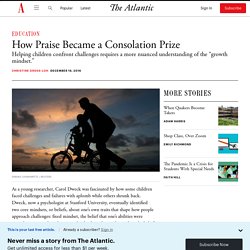
To find out that teachers were using it in the same way was of great concern to me. VIDEO - Carol Dweck: The power of believing that you can improve. Retrieval Practice — The Learning Scientists. Science of Learning. Interleaving — The Learning Scientists. Practice Makes Perfect. This article was written for SecEd magazine and first published in September 2017.
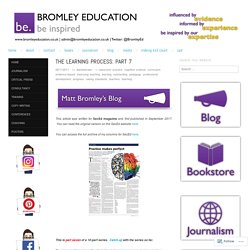
You can read the original version on the SecEd website here. You can access the full archive of my columns for SecEd here. This is part seven of a 10-part series. Catch up with the series so far. The process of learning is the interaction between our sensory memory and our long-term memory. READING - Level up Competency. Carol Dweck- the woman, the myth, the legend! – Hannah Tyreman. Carol had some powerful messages about my own mindset.
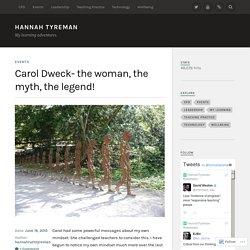
She challenged teachers to consider this. I have begun to notice my own mindset much more over the last 12 months and I think, after Carol’s talk today, I am far less filled with growth mindset then I like to think I am. I praise my own and students’ effort when the strategy being used and the learning being attained is vital. Some really honest reflection and evaluation to be done in the coming weeks and months. Like Ken, I apologise in advance with the notes approach to this post. 9 Tips to Inspire Determination □□ (by @finleyt) #edchat #education #elearning #edtech #engchat #mathchat #ukedchat. Ten teaching techniques to practise – deliberately. It’s a well-established idea that, to develop expertise in a particular skill or technique, you need to practise.
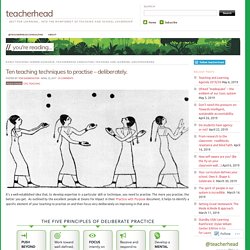
The more you practise, the better you get. As outlined by the excellent people at Deans for Impact in their Practice with Purpose document, it helps to identify a specific element of your teaching to practise on and then focus very deliberately on improving in that area. Instead of flitting from one thing to another, dipping in and out, the suggestion is that teachers would do better to select one thing from all the options and try hard to keep at it until the practice feels more like a habit.
#techtuesday - Cornerstones Practice. Grit and Growth Mindset. What do you know about Grit and Growth Mindset already?
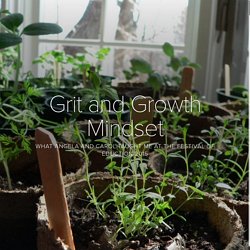
Questioning Traps. “A prudent question is one half of wisdom” Frances Bacon.

There is always something slightly tentative about the first two weeks of term: students are eying us up carefully, deciding exactly how they are going to respond to our magnificent lessons (rather Machievalian I know!) I have had an interesting week with a Year 9 group who at the moment are heroically quiet, eerily quiet in fact. I think my slightly austere initial (very Scottish) demeanour has rather thrown them, and the attempted light-hearted puns have failed miserably. There have been glimpses of personality, but so far there has been a number of teacher led moments that have reenacted this brilliant scene from ‘Ferris Bueller’s Day Off’: As I have been repeating my best “anyone, anyone” impression, I have been thinking about the number of questioning traps that I have unwittingly stumbled into through the course of the week with this group.
Now, clearly questioning is a vital teacher skill in so many ways. Time. Visual guides to evidence-based teaching techniques - TeachingHOW2s. How do pupils 'transfer' their learning. Please RT! If you like our sketchnote contact us enquiries@impact.wales for school suppor□ STUDENT ACTIVITY - Straw bridges - for making comparisons and connections. The Jubilee Centre for Character and Virtues Lecture- Dr Angela Lee Duckworth – Hannah Tyreman.
True Grit western- the grit is held by the 13 year old girl pursuing a goal.

Self-scoring grit scale that focuses on the following two aspects of grit: Perseverance over the long-term and a consistent focus/interest on one thing that matters to you more than anything else. High achievement comes not just from persevering but from working on one passion. Older adults have higher grit scores than younger adults. KindnessEmpathyCalm All develop over a lifetime This indicates that grit can change. STUDENT ACTIVITY - Silent Debate to develop students' writing. STUDENT ACTIVITY - Venn Diagram for making comparisons and connections. READING - Teachers, students and the hero's journey. READING - Developing Independent Learners.
This term I’ve been using independent learning projects with some of my classes in year 7 & 8.

At the start of the topic I discussed with the students the success criteria for the topic and asked them how they would like to go about carrying out the scheme of work. We discussed several ways of working on this SoW a) a menu – where students select ‘items’ from the menu to produce over the term to produce a piece of work that meets Bronze, Silver or Gold standard. b) personal choice – where students could make their own decisions on how to present their work c) guided – where the teacher provides suitable learning activities to meet the success criteria Each class voted for b – personal choice. We then discussed whether working in groups or individually would be better. The majority of year 7 decided to go with groups, again of no more than 3, but a few wanted to work individually as they felt they would get distracted working in groups.
Support. READING - How to Teach Students Grit. In 2013, for the first time, a majority of public-school students in this country—51 percent, to be precise—fell below the federal government’s low-income cutoff, meaning they were eligible for a free or subsidized school lunch.
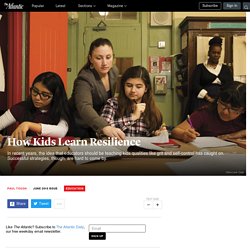
It was a powerful symbolic moment—an inescapable reminder that the challenge of teaching low-income children has become the central issue in American education. The truth, as many American teachers know firsthand, is that low-income children can be harder to educate than children from more-comfortable backgrounds. Educators often struggle to motivate them, to calm them down, to connect with them. This doesn’t mean they’re impossible to teach, of course; plenty of kids who grow up in poverty are thriving in the classroom.
#techtuesday - Cornerstones Practice. Practice for Progress Slides. One account.

All of Google. Sign in to continue to Slides Find my account Forgot password?